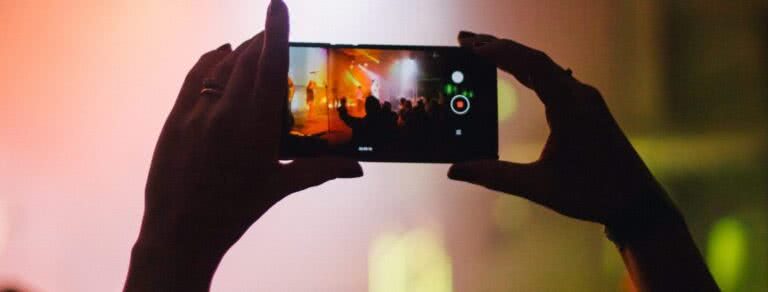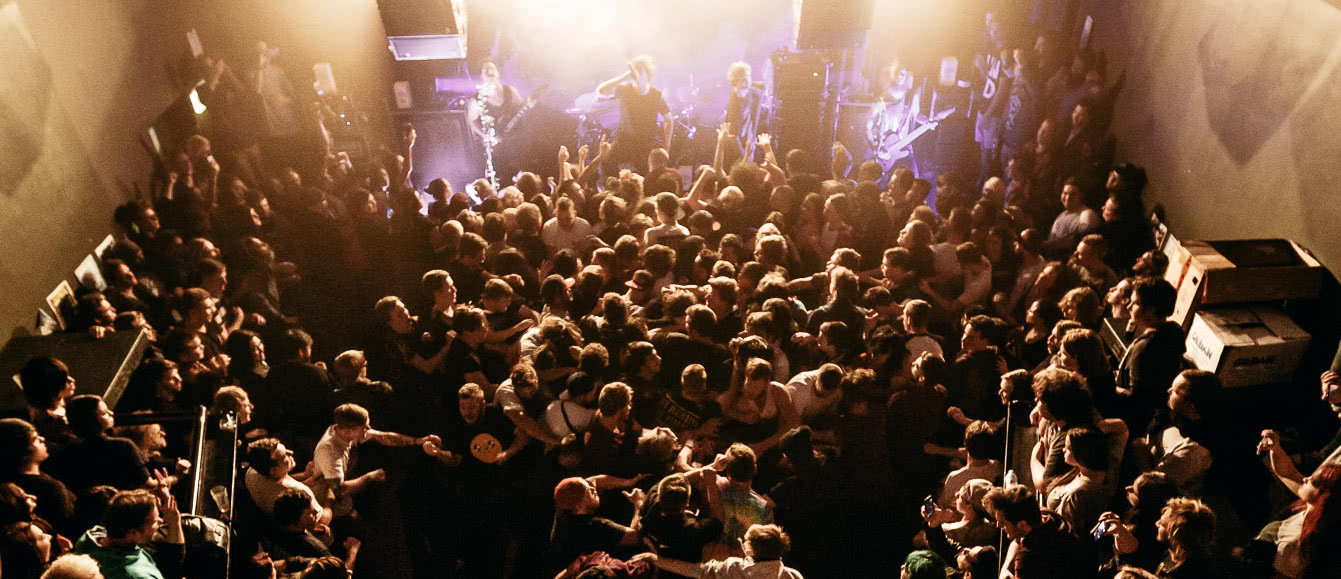The crowd cheers and glimmers with the sway of a thousand tiny lights. Only this glow isn’t coming from lighters anymore, it’s the glow of screens as revellers hold up their devices during a gig.
Smartphones at concerts and shows is a controversial topic and can be tricky to navigate for event creators and music promoters. On the one hand, smartphone use is disruptive to a performance and can annoy audiences. On the other, FOMO is a powerful driver of attendance. Fans want to share their live music experience with friends, and the more they do so, the more content is available online that will encourage people to buy tickets to your shows.
A recent study found that 73% of music fans support a mobile phone ban at gigs — but when we asked what their sharing habits were, the results told a different story. In our Australian Music Fans Report, 45% of all fans say they shared a photo, video or update from the event to social media while at the event, jumping to 79% for Gen Z.
Therein lies the paradox: people want to share their experiences in the moment, but they also don’t want to be disrupted by phones.
This puts event organisers and venues in a conflicting position. At what point do devices stop being a distraction and start impacting the success of your event?
Pros of smartphone use at live music events:
- Sharable content that promotes your venue and performances
- Helps you engage with your audience
- Allows people to share their experience and have a good time, feeling unrestricted
- Boosts your social media profile
- Audience members can use apps like Shazam to instantly discover and download their favourite songs
Cons of smartphone use at live music events:
- Can create messy legal issues with copyright and artists
- Can create a negative experience for others
- Creates more work in social media monitoring to watch out for bullying, harassment, and unauthorised content
How to manage screen use at concerts and shows to keep fans happy
Love it or loathe it, smartphone technology isn’t going anywhere. Regardless of which side of the fence you sit on, the worst thing you can do is simply ignore it and hope it goes away. If you’re running a music venue or shows, you need to develop a strategy and policy for managing phones at concerts. This could be anything from enforcing a ‘No Photography’ rule to embracing phones and encouraging sharing on your hashtag.
Whether you want to give audience members a ‘gentle nudge’ to minimise screen distraction or ask them to lock their phones away completely — the single most important thing you can do is communicate your policy to fans. Develop a proactive communication plan and make screen policies available on your ticketing page, FAQ pages, social media channels, and email comms prior to the event.
If fans receive clear advice prior to the event, it will minimise frustration, confusion, and the need to involve security for policy breaches.
How to create a smartphone policy for live music events
If you run a music venue, the policy you decide is likely up to the experience you want for your venue. However, before setting anything in stone, remember to discuss smartphone use and control measure with your artists. It’s becoming more commonplace for artists to have a say in the use of technology during their performances. Performers have a legal right in Australia to say whether or not someone can record their performances or communicate that show to the public, so you should take these discussions seriously.
Recently, artists such as Jack White, Alicia Keys and Guns N’ Roses have all requested total bans on mobile phone use during their performances. Yondr pouches are becoming a popular solution, allowing promoters to control screen use during shows without asking patrons to surrender their phones.
Others have requested that fans wait until their final song to take photos, to minimise disruption.
If your artists have requests like this, ask that (like you), they are communicating this message to fans at the start of their set — and earlier on social media if possible.
Make shareable content available after the event
If you do decide to impose a phone ban, make content readily available after the event by posting official photos and videos on social media or in follow-up email communication. Our Australian Music Fans Report found that 34% of fans said they post content from the event within a few days of attending an event (51% for Gen Z), so they may be willing to share your content in lieu of their own.
Monitor your social media channels before, during, and after shows
During a show, there are plenty of things that can go wrong for promoters and venues. From long lines and wait times, delayed sets, overcrowded venues, or a cash-only bar – your audience will always find something to complain about! Regardless of your stance on recording shows, with smartphones at the ready, those gripes can be made very public. Monitor your official channels, as well as hashtags and the venue’s geolocation tags.
Make sure that you have a social media manager overseeing online interactions during your event. This will allow you to solve audience issues quickly and directly. It will help to shut down any undesirable or inflammatory content.
If you allow photography and recording at shows, promote your social media handles and hashtags so you can take advantage of footage for sharing and marketing purposes after the event. It will also make it easier to find and monitor content, so you can remove any offensive posts.
Learn more about Australian music fans
To find out how today’s music fans are discovering and interacting at live shows and festivals, we surveyed Aussie event-goers to learn more about their path to purchase and onsite experience. Check out the full report here.






